With the recent autumnal equinox, the light is becoming softer here in the desert. This changes the way we see our garden spaces, and milder temperatures are changing how we can use them.
The dry Southwest is divided into three zones:
- The low zone: The hottest areas without winter; includes Phoenix; Palm Springs, California; Laughlin, Nevada; and Yuma, Arizona (USDA zones 9 to 10)
- The middle zone: Hot with little winter; includes Tucson, Arizona; warm areas of Las Vegas; China Lake, California; and Presidio, Texas (USDA zones 8 to 9b)
- The high zone: Moderately hot with short, definite winters; includes El Paso, Texas; Albuquerque, New Mexico; Payson, Arizona; and Saint George, Utah (USDA zones 6b to 8)
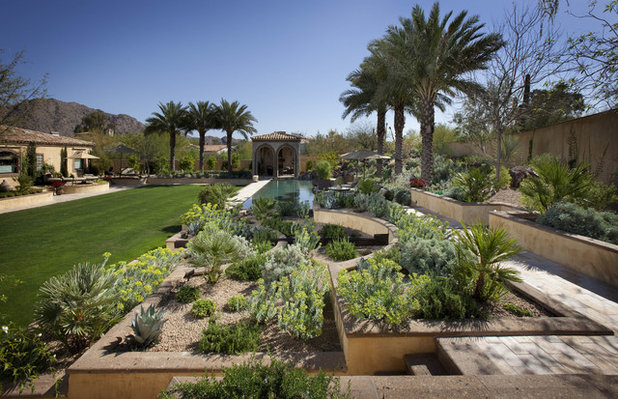
Exteriors By Chad Robert
Fall planting. Many plants will appreciate being transplanted in October, since mild temperatures and still-warm soils permit optimal plant growth.
In the middle and high zones, wait until spring to plant heat-loving to tender perennials, like
Lantana and some broad-leaved evergreen trees and shrubs (including
evergreen oak species and
India hawthorn). It's unlikely they will establish before colder weather, an planting them in the fall can result in severe damage to foliage and newer branches.
Those in the low zone can still plant most of the species the higher zones cannot, since adequate root development is likely before colder weather strikes.
Turfgrass. No matter your zone, it is too late in the year to plant or seed any warm-season lawns or turf, such as
Zoysia or
Bermudagrass. The exception is cool-season turf for the oasis areas of middle and high zones, which can be sodded with proper soil preparation and regular irrigation.
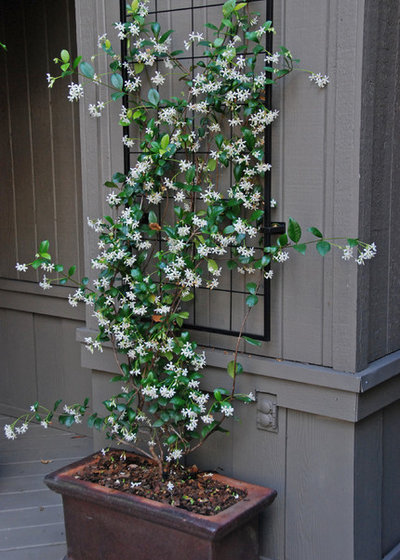
Hortus Oasis
Planting by Southwest RegionTry these types for October plantings.
Low zone: Any native and adapted plants, including
low desert wildflowers, herbs and cool-season vegetables. This also includes
Ironwood (Olneya tesota),
Desert Lavender (Hyptis emoryi) and
parsley.Medium zone: Cold-hardy
palms, plus any native and adapted plants, including
wildflowers, herbs and many cool-season vegetables. This includes
fan palm (Washingtonia species) and
Mexican grass tree (Dasylirion quadrangulatum).High zone: Cold-hardy native
agaves, yuccas and
succulents; most woody native and adapted plants; herbs with woody growth; and hardy wildflowers from the high desert. In desert grassland and foothills areas, plants are likely to germinate and develop roots with moisture by next spring. This includes
soaptree (Yucca elata),
turpentine bush (Ericameria laricifolia) and
Penstemon species.
Shown: Star jasmine (Trachelospermum jasminoides)
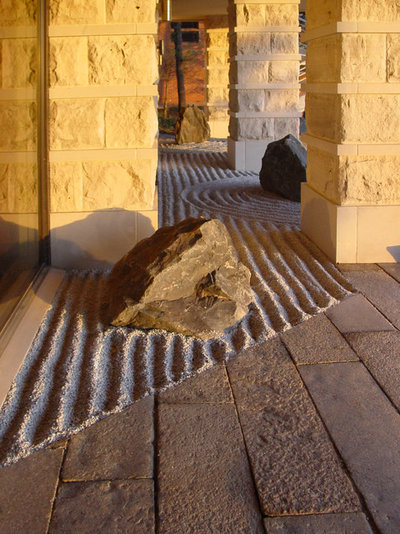 Do a simple cleanup.
Do a simple cleanup. Enjoy autumn's pleasures and do something simple that makes a huge difference: Leave the difficult work for another month. October is a great time to just touch up your outdoor spaces to keep them livable, allowing more time to enjoy them.
Remove smaller deadwood from trees and shrubs, since removal of live growth is more likely to stimulate new growth when the first colder weather arrives. Dead twigs and smaller wood pieces detract from a plant's form — and it's easy to tell those from the live wood right now. When you're finished, rake up excess debris, leaves and other litter from planting areas and the lawn. An ordered space is more relaxing, and a garden may be the prime spot for personal revival.
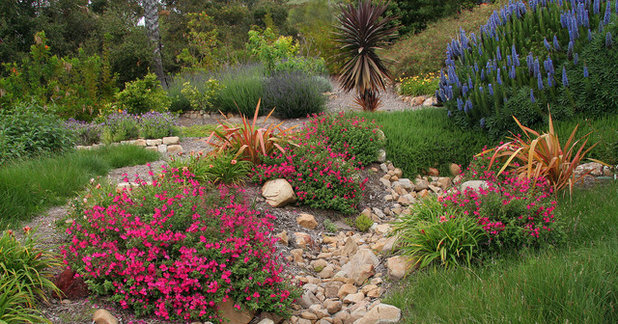
Donna Lynn - Landscape Designer
Manage water. Continue to monitor and reset the timers on any controllers you may have, especially in the low and middle zones. As temperatures decrease, reduce the water needed.
If you are planning a landscape for a barren area or for an area outside plant roots, create water harvesting opportunities to benefit plantings and some visual interest by installing subtle basins, swales and berms away from structures, where lush plantings are desired.
Consider capturing and storing stormwater for reuse as landscape irrigation during the inevitable dry periods to come. While the costs of larger systems often exceed those of potable gallon for gallon, it may be worthwhile to explore for future needs and changes in water availability. This is especially true in upland areas far from municipal water sources.
And as it's late in the growing year, don't overwater — it will encourage too much late-season growth.
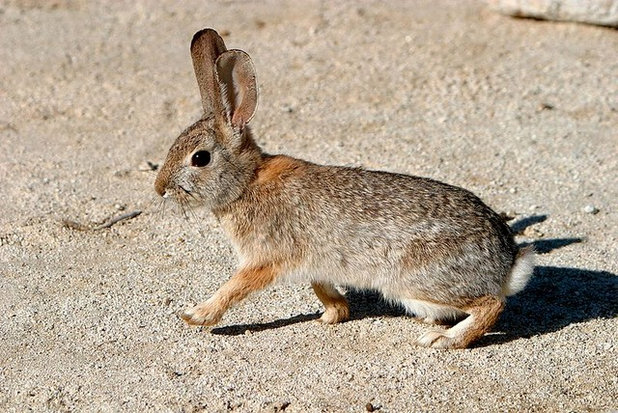 Protect plants from nibbling rabbits.
Protect plants from nibbling rabbits. Rabbits in desert regions like to find cool and moist things to eat. In drier seasons, they are fond of devouring plants they often avoid in wetter years; new plants are always quite palatable, including many prickly pear cacti.
While some plant species are more resistant to rabbits than others, the only plants I know of that are rabbitproof are
ocotillo and
rosemary. Protection is worth its time and cost. Create chickenwire "cages" with three to four stakes just beyond the new plants' foliage, to prevent rabbits from nibbling. Such protection must be removed as the plant grows, however.
Some areas also have javelina (wild pigs), which are particularly fond of a number of plants and can be very destructive. For more information, see "Javelina Resistant Plants," from the University of Arizona, and "Living With Javelina," from the Arizona Game and Fish Department.
Photo courtesy of Alan Vernon
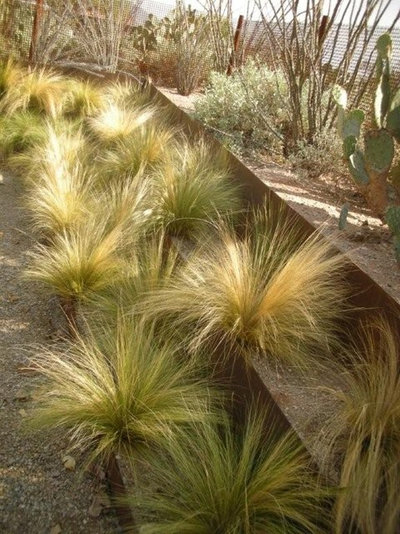
BOXHILL
Plan ahead for a balanced garden. While we are enjoying the start to fall foliage color, notably in the high zone, don't overlook the need for visual interest that includes strong evergreen appearances during winter. Instead of settling on a design with a strong seasonal theme that holds together visually for only a few weeks, aim for a mix of evergreen and deciduous foliage for a balanced garden. Massing local native cacti and shrubs, such as
turpentine bush (Ericameria laricifolia) or
creosote bush (Larrea tridentata), can accomplish this task nicely.
In the lower zones, the same is true — using deciduous plants whose foliage drops is perfectly suitable when you pair them with evergreen species.
Mexican evening primrose (Oenothera speciosa),
ocotillo and
desert willow (Chilopsis linearis) will add some seasonal interest — plus you'll get a bonus of blooms during the growing season.
And no matter the Southwestern zone, it's most beneficial to consider species that thrive and mature with less water and in our often highly alkaline soils.
Shown: threadgrass (Nasella tenuissima),
prickly pear cactus (Opuntia),
ocotillo (Fouquieria splendens) and
Texas sage (Leucophyllum).





